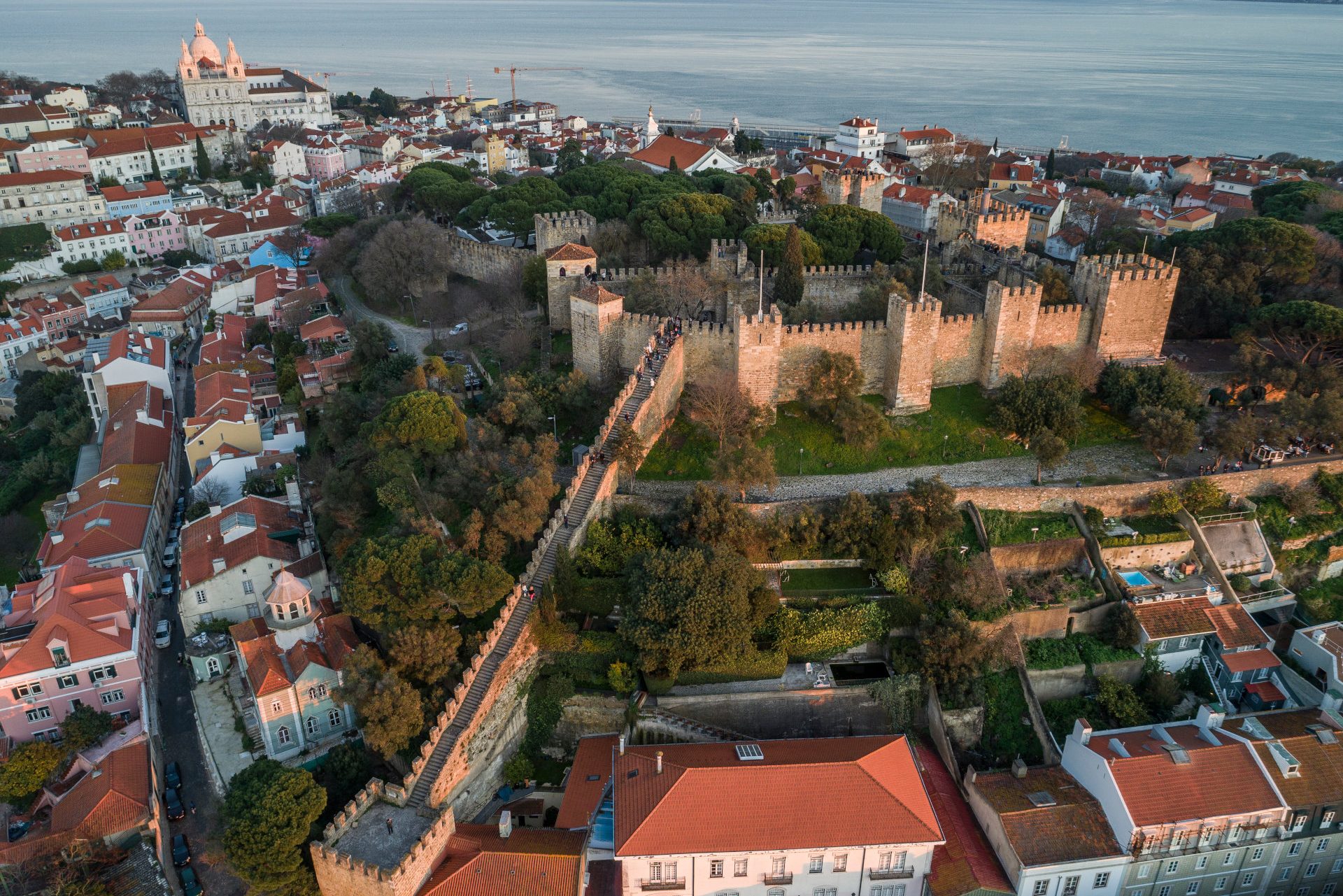The Castelo de São Jorge

Castelo de S. Jorge stands on top of a hill, overlooking the Tagus River, as the last stronghold of a wider defensive system.
It seems to date back to the 10th century, at the time of the Islamic occupation, but we do not know what type of fortification it was. On the other hand, previous occupations (pre-Roman and Roman) have been identified here.
The castle that you can visit today is a fortress with features characteristic of the “Gothic” castle, typical of the 13th century: the keep which is likely the tower that rises over the entrance gate and is attached to the wall; the wall fortified by 11 towers; the wide wall-walks; the two places-of-arms inside the castle; the barbican in the south-eastern area, built thicker at its base and featuring a moat.
The castle has three entrance gateways: the Main Gate with a stone bridge, the East Gate with a metal bridge and the Gate of Betrayal. Situated in the second place-of-arms, the Gate of Betrayal was a hidden gateway which allowed the besieged to flood out through during a counterattack or to escape through in case of danger.
From the outside, the gateway once led to a path, now disappeared, that followed the slope down.
